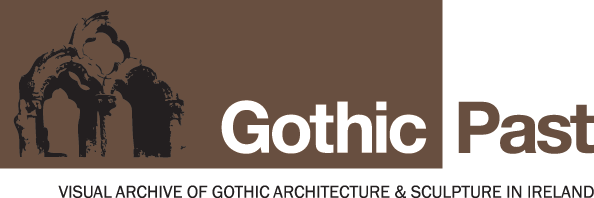Browse Items (3249 total)
Sort by Title [A-Z] | [Z-A]
Church of St. James, Taunton, Somerset, England - Font
Taunton, Somerset: Church of St. James: font, detail of figures
Church of St. James, Taunton, Somerset, England - Font
Taunton, Somerset: Church of St. James: font, detail of figures
Church of St. James, Taunton, Somerset, England - Font
Taunton, Somerset: Church of St. James: font, detail of figures
Tags: Books, England, figure sculpture, Paul, Saint, Saintly attributes, Saints, Somerset, Stone Carving, Swords, Taunton, Taunton (England)
Church of St. James, Taunton, Somerset, England - Font
Taunton, Somerset: Church of St. James: font, detail of figures
Church of St. James, Taunton, Somerset, England - Font
(handwritten on back of image): Taunton, Somerset: Church of St. James: font, date taken 1950 (AA50/8157)
Church of St. James, Taunton, Somerset, England - Font
(handwritten on back of image): Taunton, Somerset: Church of St. James: font (BB63/735)
Church of St. James, Taunton, Somerset, England - Font
(handwritten on back of image): Taunton, Somerset: Church of St. James: font (BB63/734)
Church of St. Mary Magdalene, Taunton, Somerset, England - Architectural Ornament
(handwritten on back of image): Taunton, Somerset: Church of St. Mary Magdalene (BB60/158)
Church of St. Mary Magdalene, Taunton, Somerset, England - Tower
(handwritten on back of image): Taunton, Somerset: St. Mary's: base of tower, date taken 1901 (BB48/864)
Church of St. Mary the Virgin, East Brent, Somerset, England - Bench Carving
(handwritten on back of image): East Brent, Somerset: Church of St. Mary the Virgin (AA53/8514)
Church of St. Mary the Virgin, East Brent, Somerset, England - Bench Carving
(handwritten on back of image): East Brent, Somerset: Church of St. Mary the Virgin (AA53/8515)
Church of St. Mary the Virgin, East Brent, Somerset, England - Bench Carving
(handwritten on back of image): East Brent, Somerset: Church of St. Mary the Virgin, Arms of Glastonbury (AA53/8512)
Church of St. Mary the Virgin, East Brent, Somerset, England - Window
(handwritten on back of image): East Brent, Somerset (BB55/1211)
Collegiate Church, North Cadbury, Somerset, England - Bench Carvings
(handwritten on back of image): North Cadbury, Somerset (AA52/9189)
Collegiate Church, North Cadbury, Somerset, England - Bench Carving
(handwritten on back of image): North Cadbury, Somerset (AA52/9190)
The Abbey Church of Ss Peter and Paul, Bath, England - Abbot Bird's Chantry
(handwritten on back of image): Bath Abbey, Somerset: Abbot Bird's Chantry (B47/1141)
Chichester, Sussex, England - The Cross
One of the finest of its kind, Chichester Cross stands at the junction of roads that were laid down originally by the Romans in Noviomagnus, their name for Chichester. This Cross, built of Caen stone, was given to the city by Edward Storey, Bishop from 1478 to 1503. There is a bronze bust of Charles I in the oval niche below the clock.
The Cathedral, Chichester, Sussex, England - Misericord, Dancer and Fiddler
The word misericord, sometimes also miserere, derives from the Latin for pity or compassion. It is the name for projecting shelf found on the underside of hinged choir stall seats. When these are turned up the shelf provides the occupant with support while standing for long intervals of time. In this secluded position woodcarvers placed some of…
The Cathedral, Chichester, Sussex, England - Misericord, The Musicians
A misericord or miserere is the projecting shelf found underneath hinged choir stall seats. In the raised position it affords the occupant some support while standing during long services. Often the misericord is decorated with fine carvings of heads, figures, monsters, myths and legends, or scenes from everyday life such as this one of musicians…
The Cathedral, Chichester, Sussex, England - Raising of Lazarus
Among the most precious possessions of Chichester are two carved stone panels in the south aisle of the choir, this one depicting the Raising of Lazarus and another showing the arrival of Christ at Bethany. Authorities differ as to whether they are Anglo-Saxon work of c.1000 or Norman of c.1130. They are among the finest existing works from this…




















